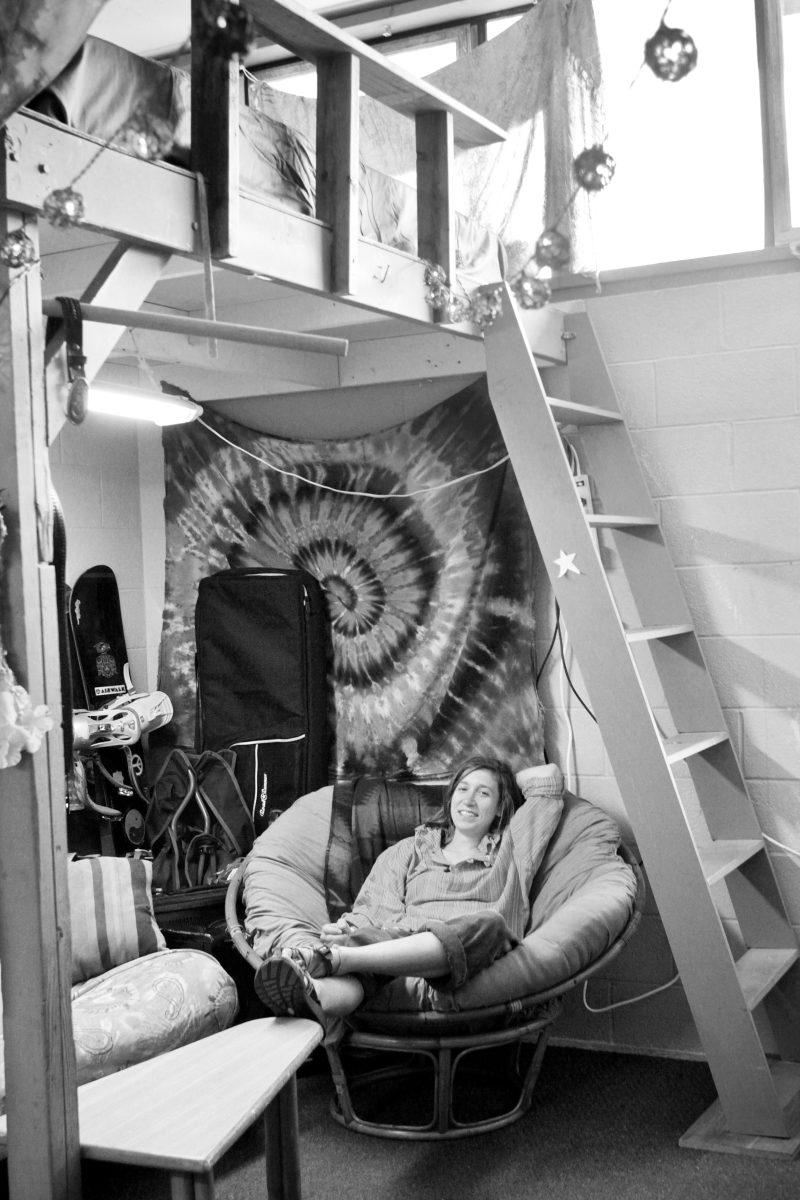Less is more. Students have to figure out how to maximize what they have, especially when it comes to living environments. Not everybody can live in castles and mansions, but if you decorate your own small space properly, such as by using space-maximizing furniture and colors, it can sure feel that way.
Steve Hong, the owner of N.C. Modern Furniture, a store that sells IKEA brand furniture in the Triangle area, has seen a lot of different furniture designs and knows which types of furniture are best for small spaces. He recommended that students equip their room with furniture that could pull double duty, uses frequently wasted space or could be stored out of the way.
Furniture that can be used for multiple purposes is especially important, according to Hong, and if used creatively, can make a space seem much larger.
“Chairs can be hung on wall hooks to use the seat surfaces as shelving,” Hong said. “Take them off the wall when you need more seating.”
Hong said that students should also keep furniture such as futons, sofa beds and drop-leaf and extendable tables in mind when decorating their living space. “[Drop-leaf and extendable tables] create as much or as little surface area as you need and can be used for work and dining. Some even come with built in storage.”
More times than not, students don’t realize when they waste space in their rooms. For example, they could make use of vertical space or the space next to sloping walls.
“Loft beds make use of vertical space and allow placing a desk or sofa underneath in the same footprint. Ekby Riset bracket mounts shelves on sloping walls, like in converted attics or top floor dorm rooms in older buildings.”
According to Hong, furniture such as nesting coffee tables, compact dining sets and folding chairs are important because they are pieces that can be easily moved out of the way. He also recommended adding casters, or wheels on platforms, to make furniture easier to rearrange.
Sarah Lasater, a sophomore in landscape architecture, agreed that mobile and versatile furniture are important staples to have in a dorm room.
“In our room we have a futon so it can fold out into a mattress, we can push it where we want and it’s really easy to move. We can pull out if people need to sleep on it, but we can keep it like a chair so we have kind of like a little living room.”
Out-of-the-box thinking coupled with smart furniture can go a long way for a dorm or small apartment, but Lasater also has a few tips on how color coordination can create the optical illusion of extra space.
According to Lasater, altering the colors in a room can invigorate its entire atmosphere. For example, colors close to white do a good job opening up a room and making it seem as though it is bigger.
“I think that white is one of those colors that just opens up a room,” Lasater said. “If you have darker colors, the light doesn’t seem like it’s going in as far.”
Bright colors also make rooms feel more positive.
“I also have bright colors too,” Lasater said. “I have a bright red blanket and a bright blue futon — it just makes it interesting.”
With a little creative thinking, smart furniture purchasing, an eye for color and some luck, even a student can feel like the king or queen of a castle.








